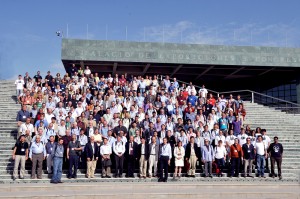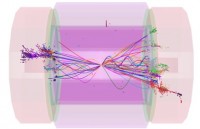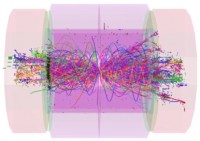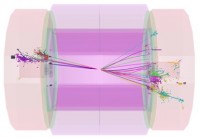
'Coopeting' researchers from both the ILC and the CLIC Study met for LCWS11 earlier this year. Image: LCWS11
In a recent seminar by the CERN Director of Research and Computing, Sergio Bertolucci, I heard for the first time the word “coopetition”. To my knowledge, it is an invented word that doesn’t yet exist in the English dictionary. He used it to illustrate the type of collaboration that is currently performed by the LHC experiments in activities like the Higgs search. It is a nice word, one that combines “cooperation” and “competition”. Its meaning is certainly difficult to explain to communities outside particle physics and on the contrary, for us, its definition appears very natural. Why this happens would probably deserve another type of article. Coming back to our discussion, the ILC and CLIC detector R&D activities constitute another example of intensive “coopetition” even at a clearer level than that of the LHC collaborations.
In fact and during the last years the “cooperation” between both “competing” detector and physics communities has intensified giving rise to very positive results. A joint group was formed by ILC Steering Committee to follow up the activities and discuss synergies. It is chaired by S. Yamada and is composed of M. Demarteau, J. Fuster, L. Linssen, F. Sefkow, M. Stanitzki and M. Thomson.
The collaboration frame has been identified in the context of the activities to elaborate two important milestone documents for each project: the Conceptual Design Report (CDR) for CLIC and the Detailed Baseline Design (DBD) for the ILC. The former one has recently been reviewed and was presented to the CERN Scientific Policy Committee this month. This CDR demonstrates that physics at a multi-TeV CLIC machine can be measured with high precision despite the severe background conditions of the machine. The latter document, the DBD, which is the final report of the R&D efforts since the Reference Design Report in 2007, will be ready by the end of 2012 in coincidence with the ILC accelerator Technical Design Report. Its aim is to demonstrate that the detector concepts are based on technologies that are feasible and cost-effective, and capable to fully exploit the physics reach of an e+e– collider in the energy range from 0.2 teraelectronvolts to 1.0 TeV.
The main differences between the CLIC and ILC detector concepts are principally due to the fact that at CLIC the operating energy is higher (0.5 to 3.0 TeV) and the bunch spacing is shorter (0.5 nanoseconds). Hence the impact of the beam-induced background is much higher. The starting points for the CLIC detector concepts (CLIC_ILD and CLIC_SiD) have been those already designed for the ILC (ILD and SiD). The common collaborative areas of development identified have been: core software development, background overlay, assessment of high energies with clear interest for the common 1 TeV region, engineering studies (a push-pull platform, for example), electronics developments, hadron calorimetry, forward calorimetry and physics benchmarks.

W{sup}+{/sup}W{sup}-{/sup} ⇒ hadrons (after selection cuts). Above events from CLIC CDR. Images: Mark Thomson (from CDR review in Manchester)
As a result of the CDR studies the ILC detector concepts have shown to also be generically valuable for a 3-TeV collider which represents six times higher energy than originally foreseen for their operation (considering 0.5 TeV as the ILC reference energy), and under much more challenging background conditions. In particular, the fine-grained calorimetry has not only shown itself to be important to achieve a good jet energy resolution but has also proven to be a very powerful instrument for the background suppression at CLIC. At 3 TeV, background processes like γγ → hadrons can produce about 5000 tracks in the detector and a total accumulated energy in the calorimeters of 19.0 TeV when integrated over the total bunch-train crossing. A reduction of all this background to 100 GeV appears to be accessible by using adequate particle flow algorithms and precise cluster timing. Additional tools have been developed for the CLIC CDR preparation and will now be used for the ILC studies at 1 TeV. In this context it is worth mentioning the technique to overlay beam-induced background in the simulation software and the improved PandoraPFA software, which is now implemented in both the ILD and SiD software tools.
In summary and in the words of Lucie Linssen, the chair of the the CLIC physics and detector study and the Project Leader of the CERN’s Linear Collider Detector project: “The CLIC detector CDR was only possible thanks to years of ILC detector optimisation studies and hardware R&D. The synergy with ILC will continue during the next project phase.”




Recent Comments